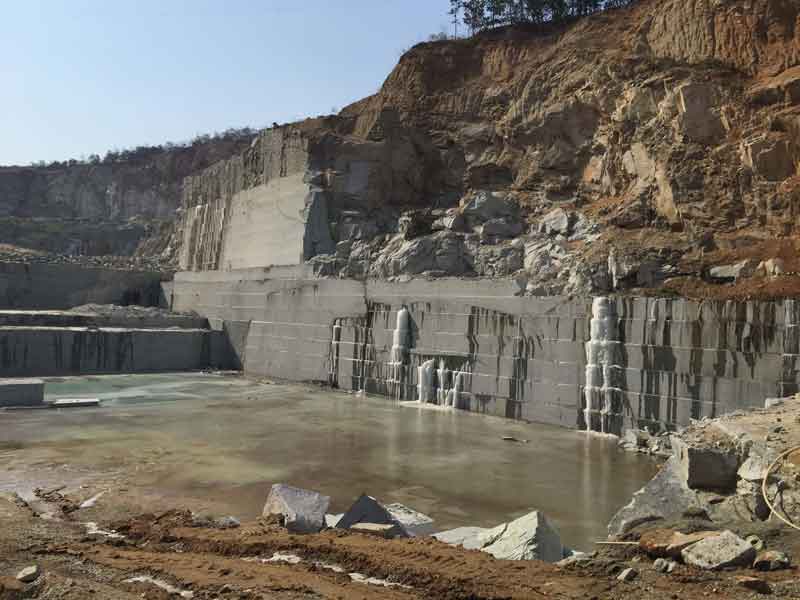Granite Quarries in South Africa Marvels: Exploring the Quarry Landscape
Granite Quarries in South Africa Marvels: Exploring the Quarry Landscape
Blog Article
Introducing the Mysteries of Granite Quarrying: Where Toughness and Sophistication Meet
The globe of granite quarrying is a realm where the raw stamina of nature converges with human virtuosity to develop frameworks that stand the test of time with an air of elegance. From the midsts of quarries to the careful polishing in workshops, the process of changing granite right into architectural wonders is a complicated dance of practice and technology. As we peer into the depths of this old craft, we begin to reveal the concealed ins and outs that shape the really essence of our constructed atmosphere.
The Origins of Granite Quarrying
In the record of architectural background, the origins of granite quarrying are shrouded in a tapestry of old workmanship and geological marvels. Going back to ancient Egypt and Mesopotamia, the removal of granite from quarries marked the start of a journey that would ultimately result in the creation of some of the globe's most renowned frameworks.
Granite quarrying's roots can be mapped to the competent craftsmens who identified the stone's longevity and aesthetic allure. Through a mix of primitive devices and sheer resolution, these early quarry workers uncovered granite blocks that would end up being the foundation of worlds.
As human beings developed, so did the strategies of quarrying granite. The Romans, renowned for their engineering prowess, established advanced methods for drawing out granite to create monuments, temples, and roadways that stood the examination of time.
The legacy of these ancient quarrying methods remains to form modern design, with granite staying an icon of strength and beauty in building tasks around the world. (granite quarries in south africa)
Tools of the Quarrying Trade
The evolution of granite quarrying methods from ancient people to modern-day times highlights the critical role played by the tools of the quarrying sell shaping the market's methods. In ancient times, quarrying tools were fundamental, usually including chisels, hammers, and wedges made from products like bronze or iron. These devices called for significant workforce and time to remove granite obstructs from quarries.

Additionally, the introduction of pneumatic tools and high-powered equipment has actually significantly decreased the physical labor needed in quarrying procedures, boosting employee safety and security and productivity. As the quarrying industry remains to innovate, the tools of the trade stay at the leading edge of driving development and forming the future of granite removal.
Drawing Out Blocks of Granite
Making use of accuracy equipment and progressed methods, the removal of granite blocks from quarries has ended up being an advanced process in the contemporary quarrying industry. The initial step involves identifying the area and dimension of the granite down payment to figure out one of the most effective extraction method. Once an ideal website is chosen, the extraction process starts with the exploration of openings for the placement of explosives. Regulated blowing up methods are then used read here to damage apart the granite into manageable sections.

Polishing and Completing Strategies
To attain a remarkable surface on granite blocks, competent craftsmens use a collection of meticulous polishing and finishing methods. After the preliminary removal and forming procedures, the granite obstructs undertake a thorough polishing phase to enhance their natural beauty and resilience.
In enhancement to sprucing up, completing methods are put on additional fine-tune the granite's appearance. These methods may include my company flaming, developing, or brushing, each offering distinct textures and finishes to suit various visual choices. Flaming, as an example, includes subjecting the granite surface to high temperatures to develop a harsh, distinctive surface, ideal for exterior applications where slip-resistance is essential. Honing, on the various other hand, supplies a matte surface that is smooth to the touch, ideal for indoor kitchen counters and flooring. By carefully picking and using these polishing and finishing strategies, artisans can change raw granite obstructs into beautiful pieces that display both strength and elegance.

Ecological Influence and Sustainability
With the expanding focus on environmental consciousness in the industry, granite quarrying practices are increasingly looked at for their effect on natural deposits and long-lasting sustainability. Quarrying for granite can have significant environmental effects. The removal process typically involves making use of hefty equipment, explosives, and large quantities of water, causing habitat destruction, dirt erosion, and water pollution. In addition, the transport of granite from quarries to processing centers produces carbon emissions, further adding to environmental destruction. granite quarries in south africa.
To minimize these impacts and make certain sustainability in granite quarrying, market stakeholders are taking on various actions. Applying sophisticated innovations to lower energy intake and water use, redeeming quarried land for eco-friendly restoration, and promoting accountable sourcing methods are some strategies being utilized. Accreditations such as the Woodland Stewardship Council (FSC) and the Leadership in Power and Environmental Design (LEED) help customers recognize environmentally friendly granite products.
Conclusion
To conclude, granite quarrying is a process that requires specialized devices and strategies to remove blocks of granite and brighten them to a high degree of surface. While the environmental impact of quarrying can be significant, efforts are being made to boost More hints sustainability techniques in the sector. Generally, granite quarrying is a delicate balance in between using the toughness and sophistication of this natural stone while minimizing its effect on the setting.
Report this page